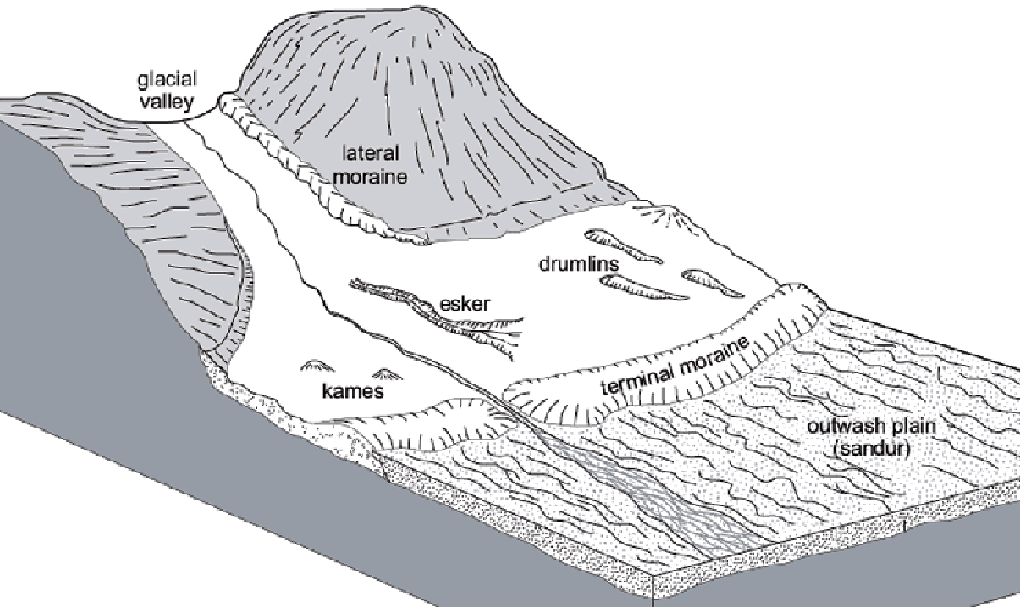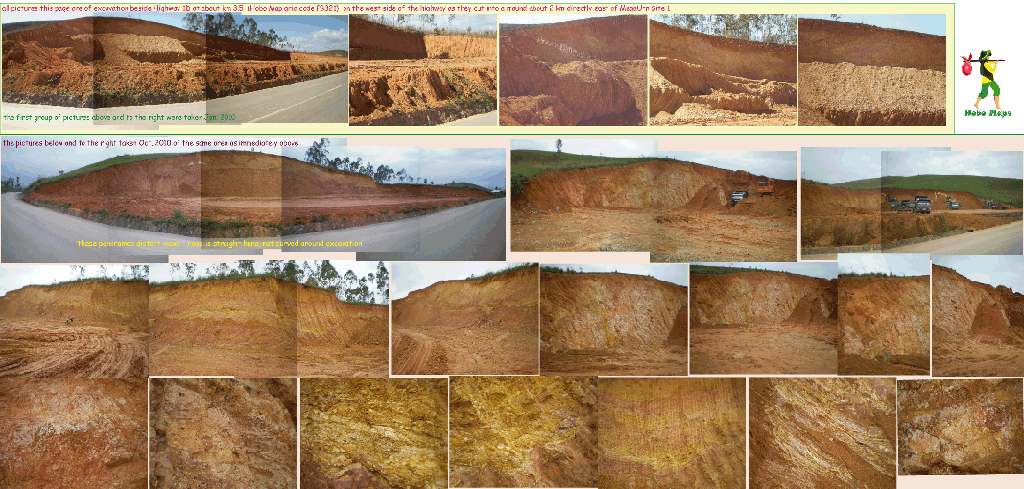
Earthen Mounds at Plain of Jars - Glacial mounds at PDJ - HoboMaps.com - Go to Plain of Jars Info Page - - - Home
The Plain of Jars (PDJ) landscape has many rounded earthen mounds that may have some connection with theories regarding the origin of the jars. Understanding these mounds may help to determine:
1. if a former lake existed on the PDJ
2. if some of the jars were carved where people found the boulders they were carved them and not transported
3. if glacial rivers of ice were at work on the PDJ
4. what the landscape of the PDJ may have been like when the jars were being carved
5. if the mounds were terraced for agriculture and irrigated by lake water
6. what the civilization might have been like when the jars were carved
The ridge just south of Jar Site 2 Ridge looks similar to a glacial terminal moraine as depicted below:

A way to help determine if these strange mounds are glacial moraines is to analyze their interior composition and look for loose aggregate materials such as clay, sand, rounded pebbles and boulders as well as other unstratified materials. A glacial moraine mound would not have bedrock or solid seams of rock in it.
1. A "Push" terminal moraine is formed when a glacier acts like a bulldozer by scraping sediment from the valley floor through which it passes and piling it up at the end of the glacier.
2. A "Dump" terminal moraine is formed when a glacier continues melting at the front in the same general place every year and dumps debris and other materials carried in the ice in a mound.
The interior of a Push Moraine would consist of sediment scraped from the valley floor through which it passed while a Dump Moraine would consist of debris carried down from the mountain above the valley and might contain boulders and other rocks that would match the type of stone found in the source mountains.
The excavation pictures below of a mound not far from Jar Site 1 show a composition of materials that could have been brought there by glacial activity.

Lack of Normal Erosion on PDJ Mounds - If we could understand why these mounds are not eroding like normal hills and don't have ridges and gullies cascading down from the peaks it may support the theory that they were submerged or partially submerged in a former lake at the PDJ. This lack of normal erosion could also be explained by human activity such as terracing for agricuture and if we knew what type of agriculture was involved we could better understand the civilization of the ancient residents and how they could afford to expend so much time and effort on megalithic jars.